With new UK distribution in the form Auden Distribution, Memphis based EgglestonWorks has been a name in the high-end marketplace for more than 25 years. Here Alan McIntosh takes a listen to their Nico Evolution Speakers & partnering stands costing £6000.
has been a name in the high-end marketplace for more than 25 years. Here Alan McIntosh takes a listen to their Nico Evolution Speakers & partnering stands costing £6000.
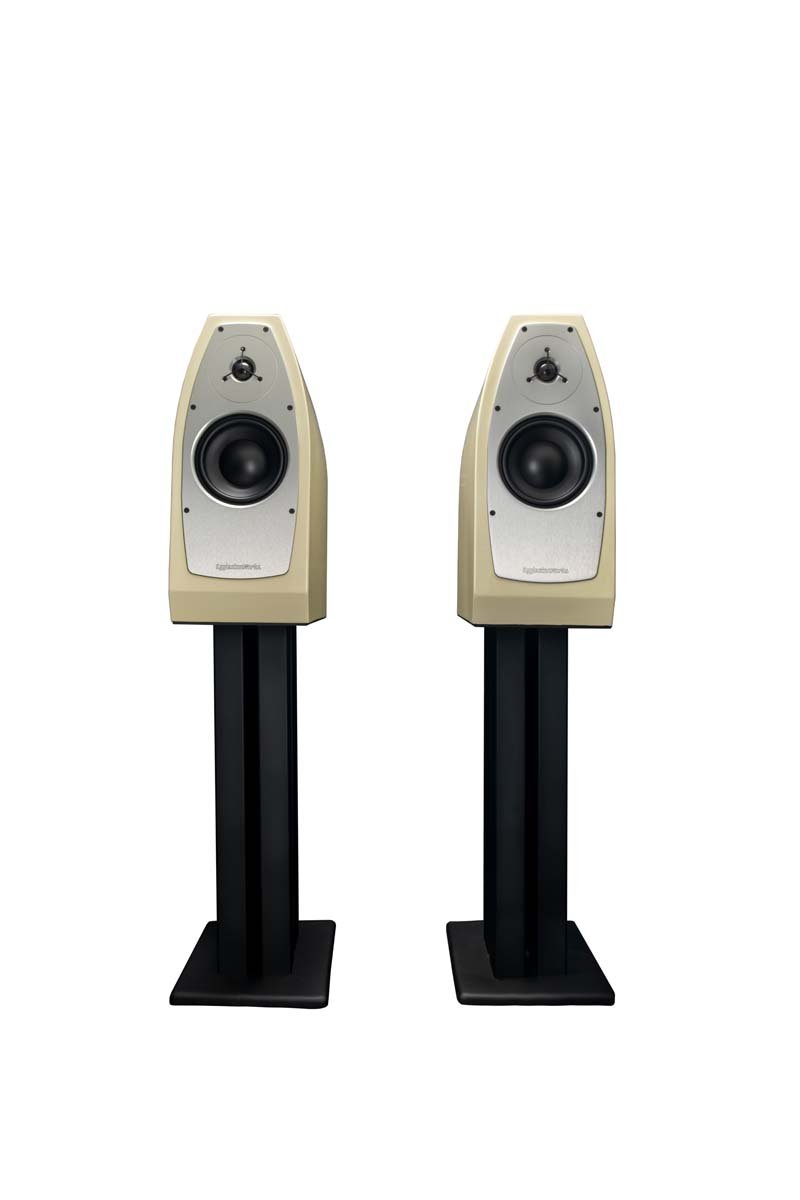 As I have a relatively small room I tend to favour well-appointed stand-mounts and my reference system has always been stand-mount oriented so I’m always keen to see what can be done in this arena when you climb the investment ladder and it was with this in mind when I was asked to review the latest offering in this space from a company with great US legacy and with a history steeped in the studios of yore that I didn’t need to be asked twice. EgglestonWorks are not that well known in the UK outside of the audiophile or studio market but with a home base in Memphis rubbing shoulders with the likes of Staxx records, Gibson guitars and the spirit of Elvis they have some serious loudspeaker credentials to boast of – not least of these that when legendary mastering engineer Bob Ludwig was seeking the perfect sound for his studios he chose the EgglestonWorks Ivy Signatures and Andra’s (for multichannel). Being presented then with an opportunity to try out the Nico Evolution stand-mounts was a serious no-brainer then!
As I have a relatively small room I tend to favour well-appointed stand-mounts and my reference system has always been stand-mount oriented so I’m always keen to see what can be done in this arena when you climb the investment ladder and it was with this in mind when I was asked to review the latest offering in this space from a company with great US legacy and with a history steeped in the studios of yore that I didn’t need to be asked twice. EgglestonWorks are not that well known in the UK outside of the audiophile or studio market but with a home base in Memphis rubbing shoulders with the likes of Staxx records, Gibson guitars and the spirit of Elvis they have some serious loudspeaker credentials to boast of – not least of these that when legendary mastering engineer Bob Ludwig was seeking the perfect sound for his studios he chose the EgglestonWorks Ivy Signatures and Andra’s (for multichannel). Being presented then with an opportunity to try out the Nico Evolution stand-mounts was a serious no-brainer then!
CONSTRUCTION
The Nico Evolutions, being the “mark II” of the Nico design, is a 2 way stand-mount speaker, supplied with dedicated stands that come (helpfully) mass filled with sand and typical spike footing. The test pair came in a lovely off-white creamy gloss with drivers set into an aluminium facia carrying the EgglestonWorks moniker. They are also available in dark grey/black. As they ship as a pair they come in pretty large boxes and are not unsubstantial to carry, so make sure you have someone on hand to help ring them in – luckily Mrs McIntosh is no wimp! With trickle-down enhancements from the Viginti and Kiva range that includes cabinet re-design and internal improved bracing as well as revised crossover design and driver refinements, the Nico Evolutions are deigned as EgglestonWorks put it to be the “very best speaker possible for the cost”.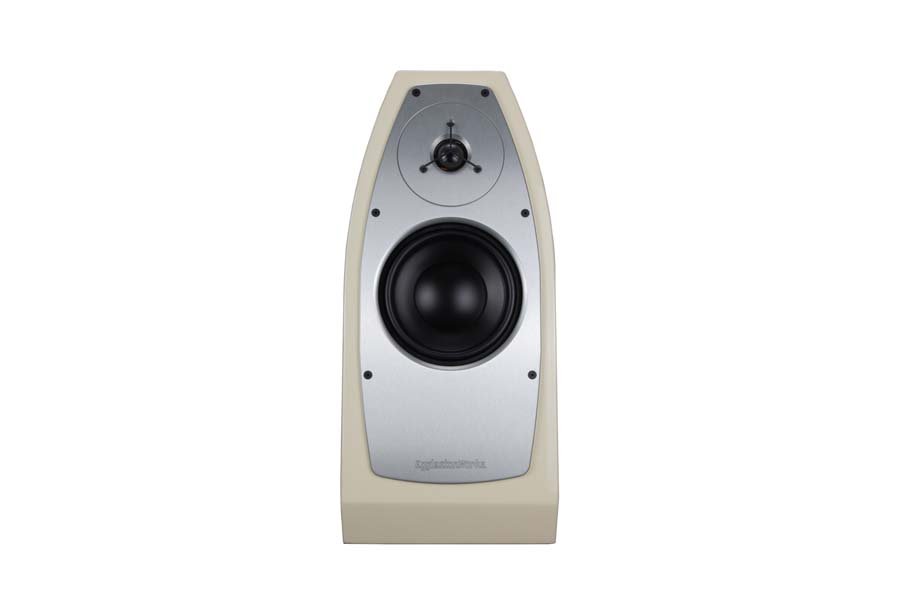
When starting to get my head round the build and reading to lay down the usual soliloquies to design I thought actually it would be more interesting and informative for you dear reader to speak to the boss man himself at Eggleston Works – Jim Thompson – to hear it from the horse’s mouth as they say – so I got in touch. Jim is a lovely and very open guy and it’s a real honour to have him give his time – albeit by email due to time differences and our diaries!
HifiPig : Hey Jim, first of all many thanks for taking the time to speak to us, let’s start by talking about cabinet design – what was the thinking behind not porting, at least in the ‘round hole’ sense?
Jim Thompson: Well, we did port but not in the traditional sense. In development of the Viginti speaker a couple of years ago, we discovered that using a slot port (or shelf port) produced a tremendous advantage over round or other types of ports. The slot port allows the cross-sectional areas of the port to be maximized to minimize any chuffing or compression issues.
HFP: Talk to me about the cabinet evolution – it’s not plain box!
JT: None of our speakers over the years have resembled anything close to a plain box. Our upper range is defined by the faceted shape of the top of the cabinet. For the Artisan line (Nico, Emma, and Oso), we chose to soften those facets for a more organic visual effect. The curved inner walls also help to introduce non-parallel surfaces which are always a plus for internal box design.
HFP: The cabinet design is certainly much nicer to look at than many, tell me about the materials used?
JT: The cabinet is made of MDF and HDF boards. For the curved sides of the cabinets, we use a cold press to create the curve from 4 layers of ¼” material with a polyester-based glue.
HFP: They are also much more interesting to look at I must say! Cone materials – always an interesting and even controversial topic for those with an engineering mid – what did you choose for the Nico’s and why?
JT: For most of our speakers we stay with poly cones and silk domes. This is altered in some of our upper range with carbon fibre and Beryllium. For the Nico and Emma, we chose to stay with our traditional feeling that great midrange is the most important characteristic of great overall sound. For that reason, these are the drivers we have were chosen.
HFP: I can’t argue with the sound there Jim, I have really enjoyed these speakers. The Evo bit – what evolutions have you made?
JT: The Nico Evo is the second iteration of the Nico speaker. If you have them side by side, the main difference is the size of the cabinet. The Nico Evo is about 25% larger than the previous version. This added box volume – along with the porting technique – produce far more bass response than previously.
HFP: Yep that bass response is quite a feat for a stand mount! – So where does the name Nico come from?
JT: see attached – an image of Jim’s dog Nico followed.
SOUND QUALITY
As my standard reference system is driven by a Hegel 190 we felt we needed something slightly more commensurate to test the Nico Evo’s. And with me knowing the Hegel sound so well (own 2 and reviewed the new upgraded 95 very recently) it made a lot of sense to add an eminently capable Hegel 590 in the mix (and I really wanted to get my paws on one). After spending a week or so first getting used to it vs my reference, with a very similar signature sound but…well…more of it, I was ready to add in the Nico’s. As usual, this is not a quick process, I sat on these speakers for a few weeks, both casually playing them in the background as I worked and in “serious” listening sessions where is could really discern what was going on. It’s a real luxury to be able to do this but it is in my opinion essential. We all know that mood, time of day and well… the odd dram can give us an impression of sound that can be fleeting.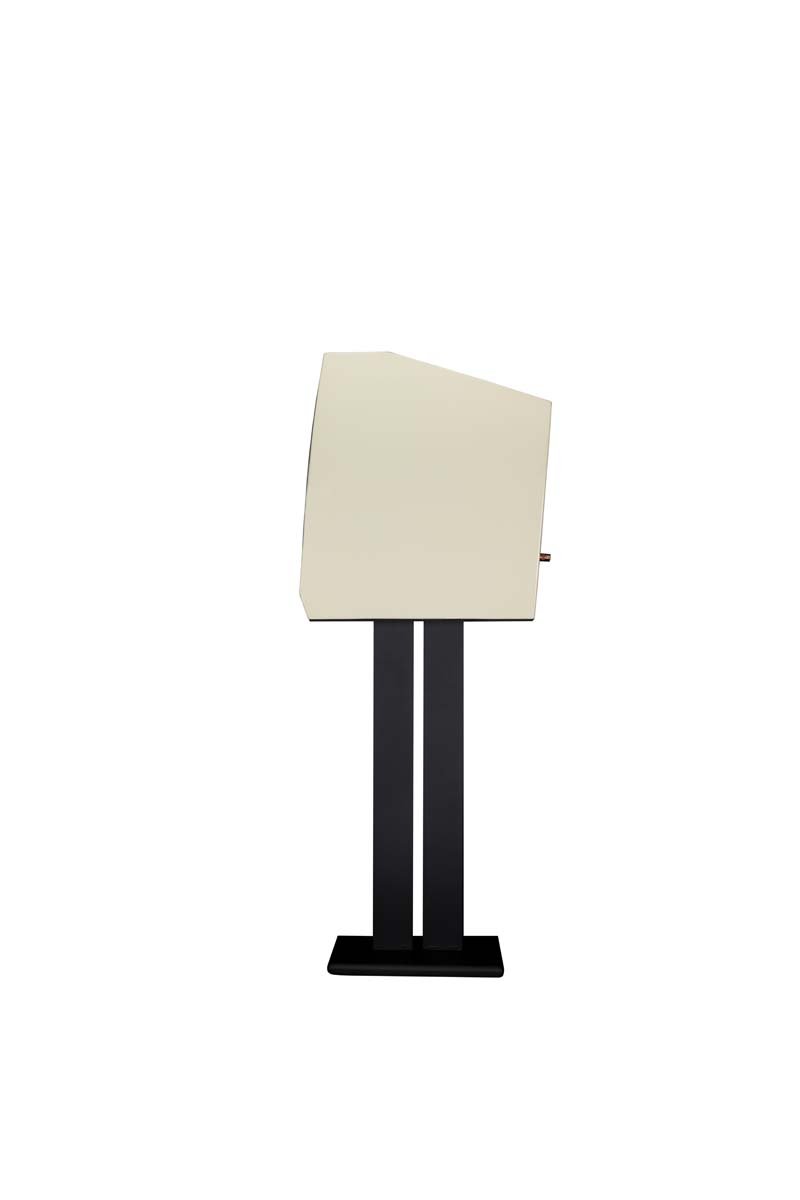
Right away with the Nico’s I was gripped but the bass extension. Playing known favourites like Simple Minds “Colours Fly and Catherine Wheel” (Qobuz, 16/44) the depth, gravitas but with control was a revelation. Extension and dimensionality are deep and wide but never slouchy or languid. The bass drum bumping along, hitting right in the gut but with a finessed boundary. Timbre across the mid’s really is beautiful. There are so many clichés used to describe HiFi but there is a great sense of separation and layering here; positioning has space and there is no muddling among even the busiest of tracks. Even Jim Kerr’s at times less than dulcet tones on “Promised You a Miracle” have a bandwidth all of their own and slide across the guitars and drums beautifully, synths crystal cut and vibrant. That bass I have to keep commenting on as its simply sublime. The Hegel has class-leading grip (damping factor) so I’m sure that it is adding some restraint, but the Nico’s are handling themselves beautifully.
To get a real sense of air and space as well as subtlety in mid’s’ and highs I moved to Melody Gardot’s truly stunning “The Rain” from her Live in Europe album (Qobuz 24/48). Cymbal washes and crashes, guitar strains, tabla’s, that lamenting saxophone and then that golden voice all given their own position on stage, perhaps a hint of warmth just edging in around mid’s but it only added to the audio goodness. I’ve tried to think about how best to explain what the Nico’s bring to the party and while all the usual platitudes could get an airing, I think it’s best explained thus; Imagine your music as existing in a cube, in 3D, and you are used to where all the parts sit in that cube. Now imagine stretching that cube just a smidge, enough that every player is given some extra room and the overall space is increased in all directions, including down into bass – that is how I sum these speakers up. Melody’s breathy low voice and glass high tones fill the stage like fog and lasers in an 80’s video. The overall effect is incredible.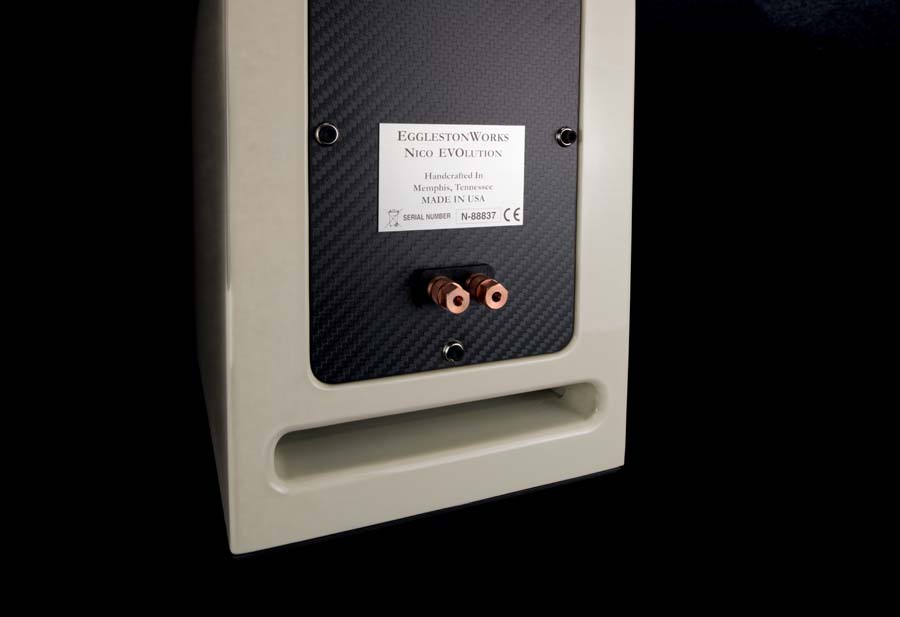
I have sat and listened to these speakers now for hours on end and not once am I feeling fatigued, instead, every listen I find something new. It feels like that slot port, and cabinet topology is changing the physics of what I’m hearing and there are new players, new extensions in the space. And they are beautiful to sit and look at to boot! Piano strikes bounce along and ring just right, bass guitar is full of dynamics and transitions to the point you feel you could see and feel the weight of it, see the strings vibrating in the puckers hands. No speaker is perfect, there is at times just a warming around the lower mids and that bass at times threatens (but doesn’t) let fly, for some who may prefer dryer, clinical sounds there may be too much on offer here, but for those who want in your face dynamics, power behind the stage, full delivery these Nico Evo’s are way high up the must-try list, and at a price of entry that belies what is on offer. As I finish this paragraph Melody is continuing to embrace me lyrically with “Deep Within the Corners of My Mind” and I don’t want to leave! The sheer vividness of the audience applause and resonance of those strings in the intro are a joy!
CONCLUSION
Paired with the Hegel 590, which many will know offers a very uncoloured and dynamically powerful sound coupled with class-leading grip courtesy of their SoundEngine 2.0 technology, the Eggleston Works performed wonderfully. Set in my relatively small room (just over 14m sq) and given air to breathe from the back wall, and some minor placement attention, they offered up a beautifully engaging experience. Across rock, electronica and jazz there was never a dull moment. That incredible bass response aided by that intriguing slot port design lends itself well to those who love big electronic basslines, while the control and timing through mid’s and highs really compliment analogue jazz and prog. Pairing to match desirable bass could be advised but this is the same of all speakers. With the history they have these speakers were never going to disappoint, but as entry level for EgglestonWorks they surprised, the budget is not outlandish and in my opinion well worth it!
AT A GLANCE
Build Quality: Wonderful – I’ve had so many square edge boxes trough the room its delight to have speakers that are very well thought through aesthetically, and the materials and build quality are top-notch. The dedicated stands are superbly sturdy but can take a bit of fettling to ensure the speaker sits fully level.
Sound Quality: Thwumpingly good (yes I made the word up but it does the job) – that reach into the depths with a solid, but deft handling on lows, robust but never overly forward mid’s and refined, keenly edged but never coarse highs, great timing and separation. Just eminently engaging and inviting. A real pleasure to listen to for hours on end.
Value For Money: As a speaker and dedicated stand package, at this level sound quality these are exceedingly good value for money. A very big sound for a, some might say, entry budget when referring to credible components. No corner-cutting here.
Pros:
Sheer delivery overall, space, dynamics and power, separation and depth of bass.
Preloaded, bespoke stands.
Build quality is exceptional and strong aesthetics.
Cons:
Honestly, at this price point, the only real con is you need a strong back to get them in!
If I had to be uber critical pair well to get the perfect sound for your bass desires
Price: £6000rrp including stands (pre mass loaded)

Alan McIntosh
Review Equipment: Aries G1 Streaming Transporter and 432 Evo Reference Streaming Server, Modified SL1210Mk3D (Origin Live Zephyr arm, Timestep HeV PSU, Hana ML) ,Townshend Avalon with Helius Scoprio Mk2 and modified AT95SH). Vincent Pho700 Phono Stage. WyWires Blue speaker cables and Analogue RCA., Chord Shawline Coax/SPDIF. Titan Audio power throughout. Music service used was Qobuz Studio, LDS platform for Auralic and Roon for 432.
Specifications:
Frequency response: 38Hz to 24kHz
Nominal impedance: 8ohms
Sensitivity: 87dB
Single or Bi-Wire?: Single
Woofer Midrange system: Single 6” woofer
Treble System: 1” fabric dome
Dimensions: 8.25” W x 16” D x 18.75” H (approx. 21×40.5×47.5 cm)
Weight: 28lbs (approx.12.7Kg) per speaker
























































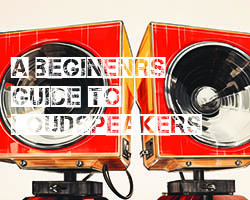


























































































































































You must be logged in to leave a reply.